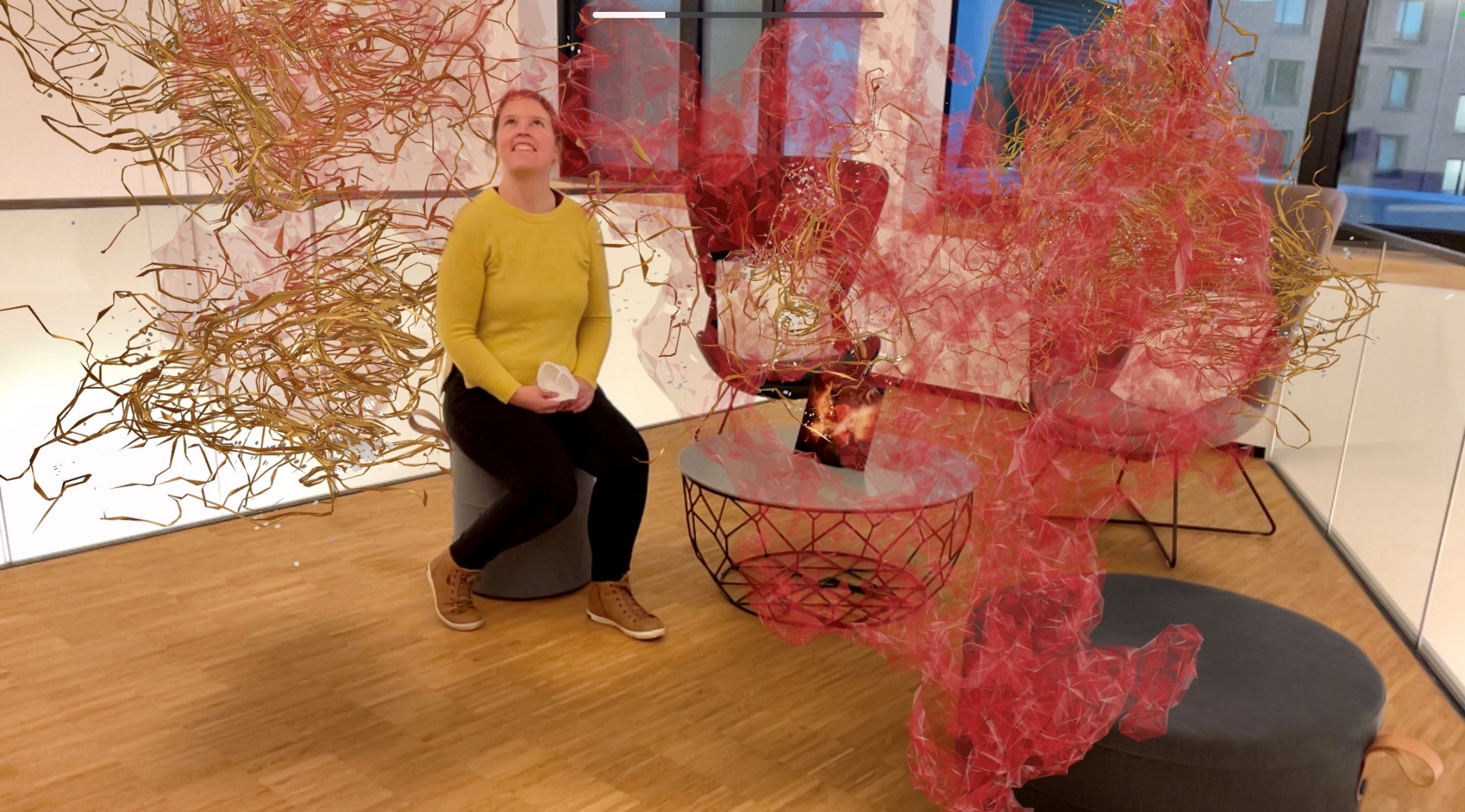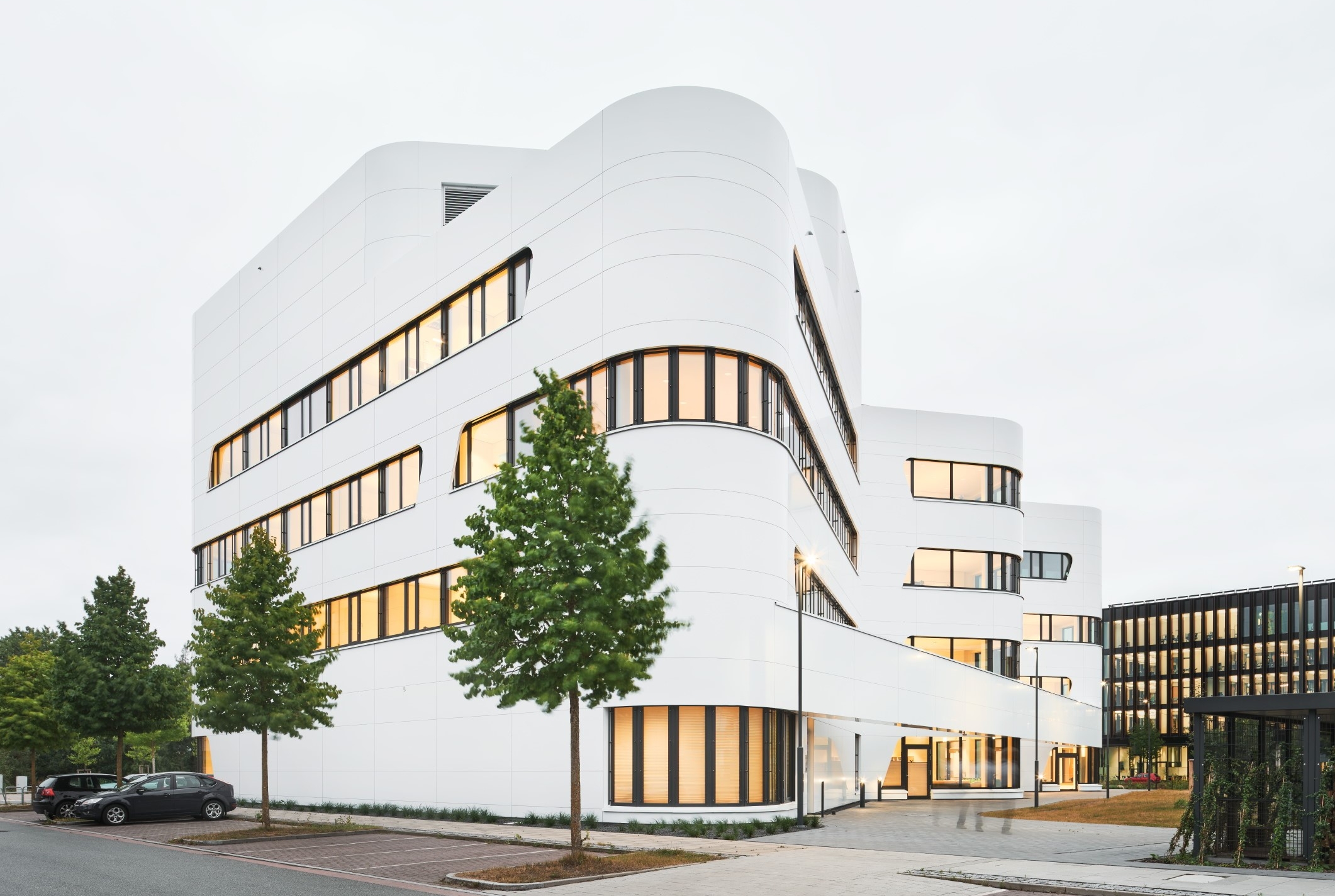Institute News
On Monday, the Los Angeles-based Bulgarian media artist Eli Joteva provided her work “IntraBeing Expanded View” as a permanent exhibit to Fraunhofer MEVIS Institute’s building at the main location in Bremen.
What lies within the boundaries of being? The augmented reality (AR) artwork explores the limitations of imaging the human body to imagine a limitless and intra-active sense of being. “I have always been interested in the complex ecosystems inside the human organism and have often used my own body in my work,” Eli Joteva says. “That’s why I was excited to be able to take MRI data of my body and work with it.” The work is an extension of the screen-based installation “IntraBeing”, the outcome of the artist-in-residency “STEAM Imaging III.” Eli Joteva worked remotely with researchers at Fraunhofer MEVIS in 2020 to develop “IntraBeing,” exploring the capacities of medical imaging and simulation techniques to locate the enigmatic spaces that emerge at the limits of resolution and computation.
In “Intrabeing: Expanded View” a free-standing object functons as a physical image anchor for the 3D artwork derived from the artist’s pelvic scan. Visitors can scan a QR code or tap an NFC tag on the object to open the digital sculpture in their phones and interact with it in AR. The artist performed a series of full-body MRI and diffusion tensor imaging scans, which are usually only used to visualize connectivity in the brain, to instead reveal nerve fibers in the pelvic region of her body. She was inspired by the fact that hydrogen atoms, on which MRI processing relies, are also in constant nanosecond flux and thus elude precise measurement. These components are key elements of the original artwork, which shows an oscillating internal landscape of hydrogen atoms, the nerves along which they flow, and the magnetic potentials generated between them. “IntraBeing” was exhibited at the Ars Electronica Festival 2020, amongst other places.
STEAM Imaging Artist Residency
The starting point of the “STEAM Imaging” residency is to bring artists together with scientists, school students, and (since recently) parents to create broad access to a self-motivated exploration of topics in digital medicine through STEAM events and workshops. STEAM stands for Science, Technology, Engineering, Art, and Mathematics. Boundaries of individual disciplines are crossed, flexible forms of learning and collaboration are developed, and skills are taught to deal effectively and critically with new technologies in digital medicine. The residency allows artists to exchange intensively with MEVIS experts and link their work with the latest scientific methods and approaches in digital medicine. STEAM Imaging III was hosted by Fraunhofer MEVIS in collaboration with Ars Electronica, Linz, Austria, the International Fraunhofer Talent School Bremen, the School Center Walle, Bremen, and the UCLA ArtSci Center, Los Angeles, USA.
Workshop of Digital Medicine
The building of Fraunhofer MEVIS on the campus of the University of Bremen was occupied by the Institute in May 2021 after two and a half years of construction. With 2,600 square meters of floor space, the building designed by the architectural firm Haslob Kruse + Partner accommodates up to 210 workstations. The spatial concept includes offices, seminar areas, meeting rooms, technical rooms, and individual laboratory areas and offers both retreats for concentrated work and open areas for communication and collaboration. As a “Workshop of Digital Medicine,” the building is to be seen as a driver of digital change in the health sector. It should create space to meet and discuss digital medicine. The construction costs of around 15 million euros come in equal parts from the Federal Ministry of Education and Research, the State of Bremen, and the European Regional Development Fund (ERDF).
Learn more about IntraBeing in the audio podcast Into the MRI Tube for Art’s Sake
 Fraunhofer Institute for Digital Medicine MEVIS
Fraunhofer Institute for Digital Medicine MEVIS
